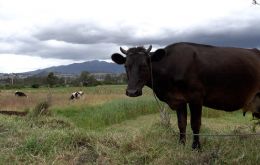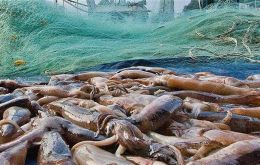MercoPress. South Atlantic News Agency
Tag: Food and Agriculture Organization (FAO)
-
Tuesday, November 11th 2025 - 15:23 UTC
FAO Food Prices decline in October, with the exception of beef

World food commodity prices generally declined in October, driven largely by ample global supplies, according to the benchmark measure released by the Food and Agriculture Organization of the United Nations (FAO). However beef continued to rise because of a very firm global demand.
-
Friday, October 17th 2025 - 10:26 UTC
Uruguayan President Orsi sends message at FAO event in Rome

Uruguayan President Yamandú Orsi was on Thursday the only Latin American speaker at the ceremony in Rome commemorating the 80th anniversary of the UN Food and Agriculture Organization (FAO) on World Food Day.
-
Monday, October 13th 2025 - 07:37 UTC
FAO Food Prices Index slightly down in September except for beef

The FAO Food Price Index, which tracks monthly changes in the international prices of a set of globally-traded food commodities, averaged 128.8 points in September, versus a revised August level of 129.7 points. The September reading represents a 3.4 percent increase from a year ago.
-
Saturday, June 14th 2025 - 09:04 UTC
FAO estimates record global cereal production in 2025/2026

FAO also released a new Cereal Supply and Demand Brief, forecasting a record global cereal production of 2 911 million tons in 2025, up 2.1 percent from 2024. World cereal utilization is forecast to increase by 0.8 percent in 2025/26, reaching 2 898 million tons.
-
Monday, June 9th 2025 - 20:18 UTC
FAO Food Price Index dips in May amid lower cereal, sugar and vegetable oil prices

The benchmark of world food commodity prices dropped in May as marked declines in international quotations for maize and palm oil outweighed historically high prices for butter and bovine meat, the Food and Agriculture Organization of the United Nations (FAO) reported.
-
Thursday, May 15th 2025 - 10:11 UTC
The cephalopods market faces tight supply and rising prices, FAO report

The global cephalopods market is under increasing strain as tight supply continues in early 2025. Reduced landings in key producing regions, adverse weather, and extra tariff barriers are contributing to upward pressure on cephalopod prices across major international markets, reports FAO’s Mohamed Hammi.
-
Monday, May 5th 2025 - 20:40 UTC
FAO Food Price Index increases in April, cereals, meat and dairy lead the tendency

The benchmark measure of world food commodity prices increased in April, driven by higher quotations for major cereals, meat and dairy products, the Food and Agriculture Organization of the United Nations (FAO) reported.
-
Thursday, April 24th 2025 - 18:03 UTC
International Mother Earth Day, FAO launches new climate change website

Protecting our planet from the climate crisis through sustainable agri-food systems is fundamental if we are to ensure food security for the world’s rapidly growing population.
-
Tuesday, March 18th 2025 - 10:37 UTC
Avian Influenza, new ten-year strategy coordinated by FAO and Animal Health Organization

In response to the evolving global ecological and epidemiological landscape, FAO and the World Organization for Animal Health (WOAH) have unveiled a new ten-year strategy aimed at preventing and controlling High Pathogenicity Avian Influenza (HPAI).
-
Friday, March 14th 2025 - 19:42 UTC
FAO: Coffee production down brings prices up to all-time high

The United Nations Food and Agriculture Organization (FAO) released a report on Friday stating that global coffee prices hit a 13-year high in December last year, driven by reduced production in major exporting countries due to adverse weather.
